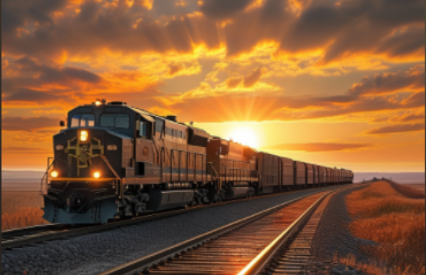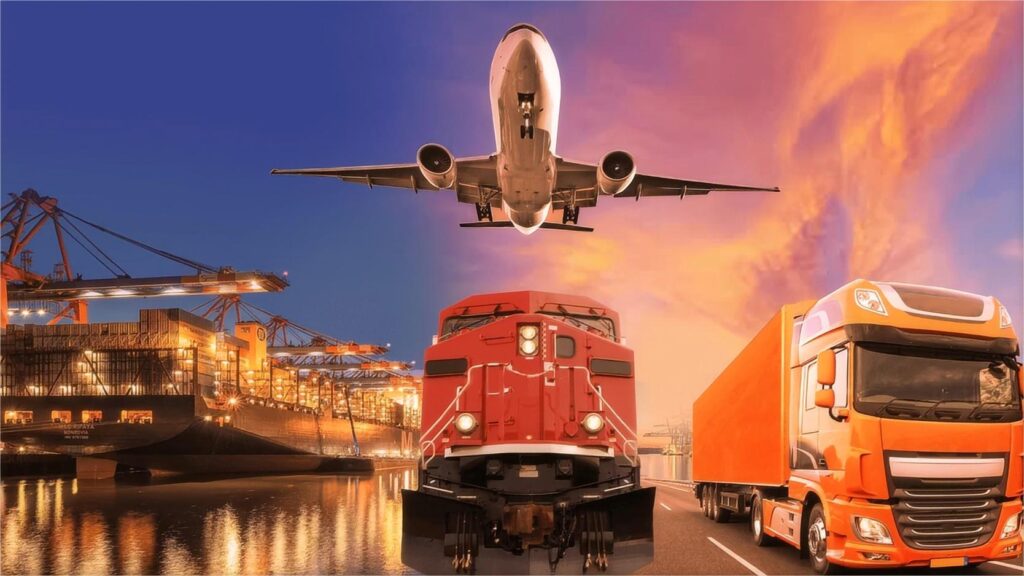Shipping by rail from China to Europe is now a powerful logistics option—blending cost savings, delivery speed, and cross-border efficiency. It’s especially attractive for importers targeting inland Europe, where ocean freight may not reach directly and air freight is too costly.
This article gives you everything you need to understand, plan, and optimize rail shipments—from timelines and routes to pricing and documentation.
1.Why Shipping by Rail Is Gaining Global Momentum
The growth of China-Europe rail freight—driven by the Belt and Road Initiative—has opened up a mid-tier transport solution for businesses that once had to choose only between sea and air.
Why it’s booming in 2025:
- Faster than sea freight (12–18 days vs. 35+ days)
- Cheaper than air (up to 60%)
- Eco-friendly (80–90% less CO₂ than air)
- Works for both small & large volumes
- Perfect for inland destinations: no seaport needed
2.Main Rail Routes: From Chinese Cities to European Hubs
Trains now connect 80+ Chinese cities with 25+ countries across Europe. Routes run through Kazakhstan, Russia, and Belarus, entering the EU via Poland or Lithuania.
| Origin (China) | European Destination | Key Border Crossings | Transit Time |
|---|---|---|---|
| Xi’an | Duisburg, Warsaw | Khorgos, Brest | 13–16 days |
| Chongqing | Hamburg, Milan | Manzhouli, Malaszewicze | 14–18 days |
| Chengdu | Minsk, Prague | Alashankou, Brest | 12–15 days |
| Zhengzhou | Tilburg, Madrid | Kazakhstan, Poland | 13–18 days |
3.Shipping by Rail: End-to-End Process Breakdown
Understanding how rail freight works will help you avoid delays and ensure smooth delivery. Here’s the process:
✅ Pickup & Inland Haulage
Your goods are picked up from the supplier or warehouse and transported to the nearest rail terminal (e.g., Xi’an, Chongqing).
✅ Container Loading (FCL or LCL)
Cargo is packed into FCL (full container load) or consolidated with others for LCL (less-than-container load). Containers are sealed and prepared for export.
✅ Export Customs Clearance
Your freight forwarder handles documentation:
- Commercial Invoice
- Packing List
- Export Declaration
- HS Codes
- CIQ (if applicable)
✅ Rail Transit (Main Leg)
Trains run on fixed weekly schedules, crossing multiple borders with customs checkpoints at Kazakhstan, Russia, and Belarus.
Tracking is available via:
- GPS for FCL
- Checkpoint scans for LCL
✅ Import Customs Clearance
Goods arrive at a European hub (e.g., Duisburg, Warsaw). Customs clearance is completed locally with support from the forwarder.
✅ Final Delivery (Optional)
Choose:

4.Rail Freight vs. Sea & Air Freight
| Feature | Rail Freight | Sea Freight | Air Freight |
|---|---|---|---|
| Transit Time | 12–18 days | 35–45 days | 5–9 days |
| Cost | Moderate | Lowest | Highest |
| Volume | FCL/LCL supported | Best for large loads | Limited |
| Eco Impact | Low | Medium | High |
| Schedule Risk | Low | Medium-High | Medium |
| Best For | Mid-value cargo, inland Europe | Bulk, slow goods | Small urgent goods |

5.Real-World Use Cases
Here’s how businesses are using rail freight today:
- Electronics companies ship laptops from Shenzhen to Germany in 16 days.
- Fashion brands move seasonal clothing to Poland, skipping ocean port delays.
- Automotive suppliers send engine components from Chengdu to Hungary.
- eCommerce sellers use rail + truck to reach Central Europe affordably and quickly.
📌Rail freight is no longer just for heavy industry—it works across multiple sectors.
6.How Much Does Rail Freight Cost?
| Mode | Route | Typical Cost (USD) |
|---|---|---|
| FCL | Xi’an to Duisburg (40’ HQ) | $4,200 – $6,500 |
| LCL | Chengdu to Warsaw (per kg) | $2.5 – $3.5/kg |
| Reefer | Zhengzhou to Hamburg | $6,000+ |
📌Add-ons may include:
- Customs handling
- Bonded warehousing
- Insurance (optional)
- Final delivery (if DDP)
📌Note: Fuel costs and geopolitical changes can affect rates. Always confirm with your freight provider.

7.FCL vs. LCL: Which to Choose?
| Criteria | FCL | LCL |
|---|---|---|
| Volume | Over 15–18 CBM | Under 15 CBM |
| Security | High (sealed container) | Moderate (shared space) |
| Speed | Slightly faster | Slower (due to handling) |
| Cost Efficiency | Lower per CBM | Ideal for small cargo |
📌LCL is perfect for small business imports, sample orders, or monthly replenishment.
8. Risk Factors and How to Reduce Them
Like any transport method, rail has risks. Here’s how to manage them:
| Risk | Solution |
|---|---|
| Border inspection delays | Use experienced forwarders with EDI |
| Theft or damage | Use cargo insurance & container seals |
| Route changes | Confirm fixed-route services upfront |
| Documentation issues | Ensure compliance with HS codes, CIQ |
Final Takeaway
If you need something faster than sea but cheaper than air, shipping by rail is the perfect fit. It’s ideal for:
✅ Landlocked countries (like Belarus, Poland, Hungary)
✅ Time-sensitive but non-urgent goods
✅ Companies needing reliability & cost-efficiency
Rail freight is no longer a backup—it’s a core logistics strategy in 2025. And as demand and infrastructure grow, it’s only getting better.
Request a Quote
Need a tailored solution for your shipping from China?
Let TJ China Freight Forwarder assist you with reliable, cost-effective service.
FAQ:
Q1.How often do trains depart from China?
Major terminals like Xi’an or Chongqing have daily or 3x-weekly departures, depending on destination.
Q2.Can I ship batteries or dangerous goods?
Some UN-classified goods are allowed but require special handling and pre-approval.
Q3.What if my destination is outside of Europe?
You can combine rail to Europe + air or truck to reach final destinations in the Middle East or even Africa.
Q4.Can I delay customs clearance?
Yes. Using bonded warehouses allows you to store cargo without immediate clearance.
Q5. Are rail shipments insured by default?
Most are not. You’ll need to add cargo insurance—recommended for high-value shipments.
